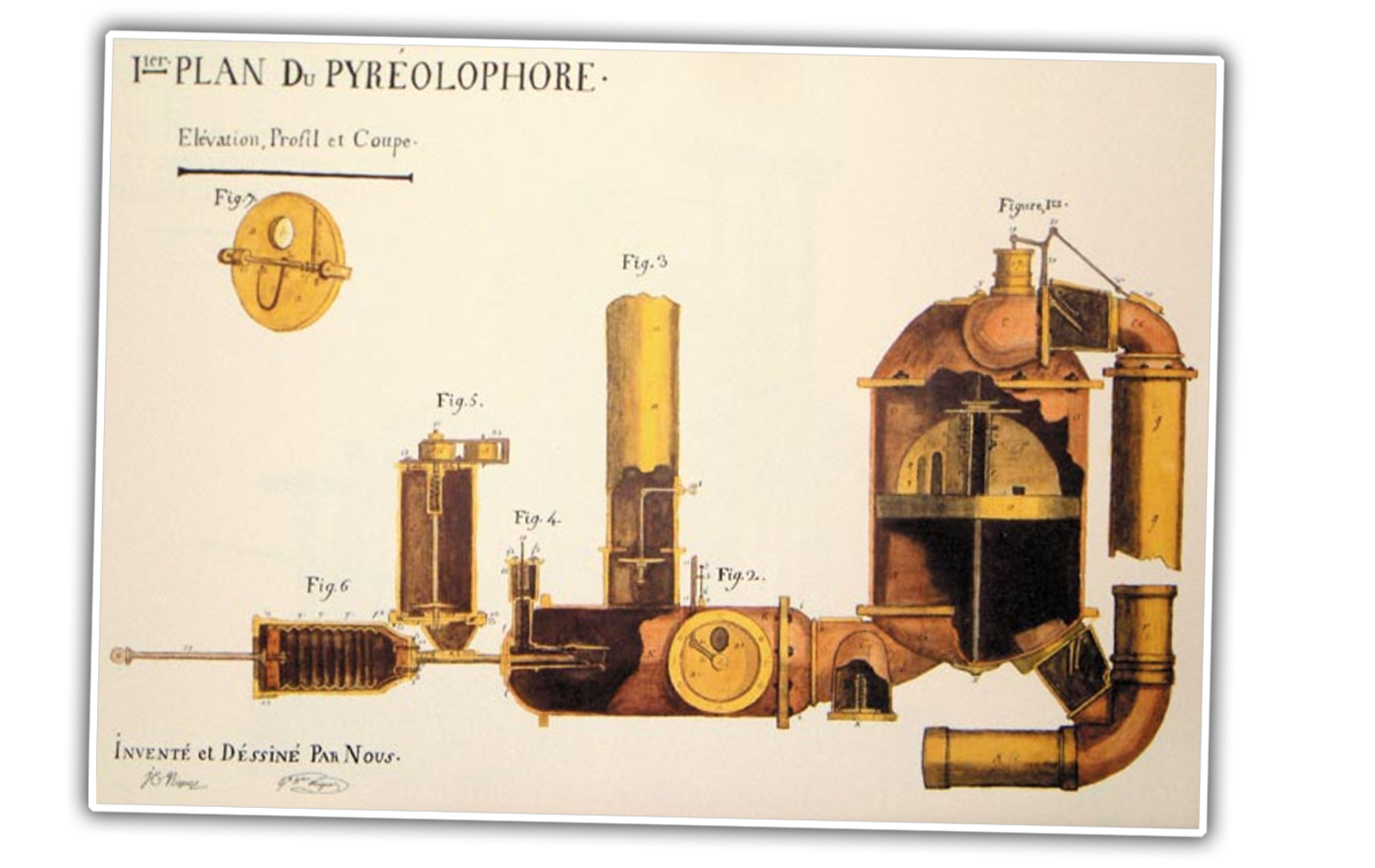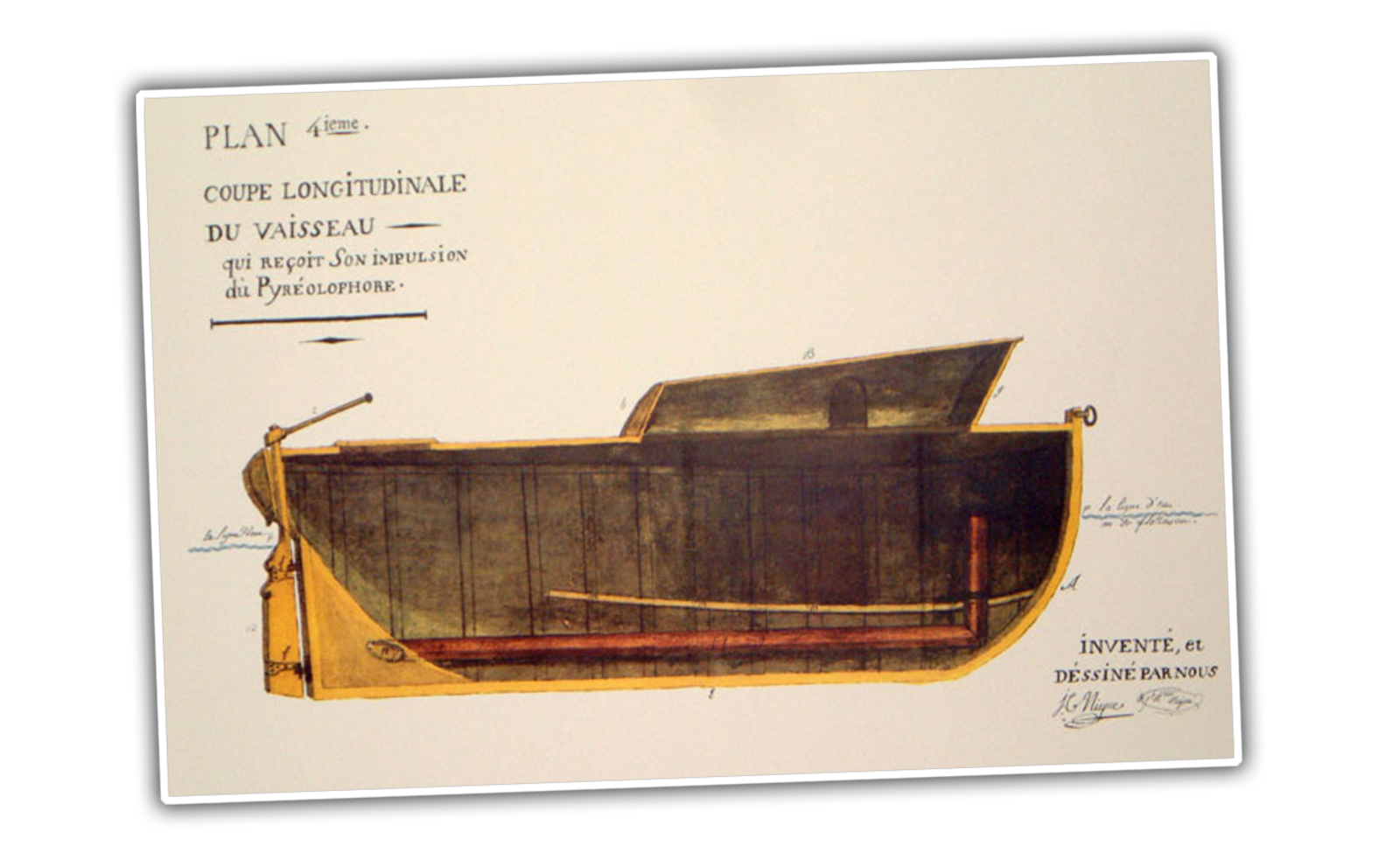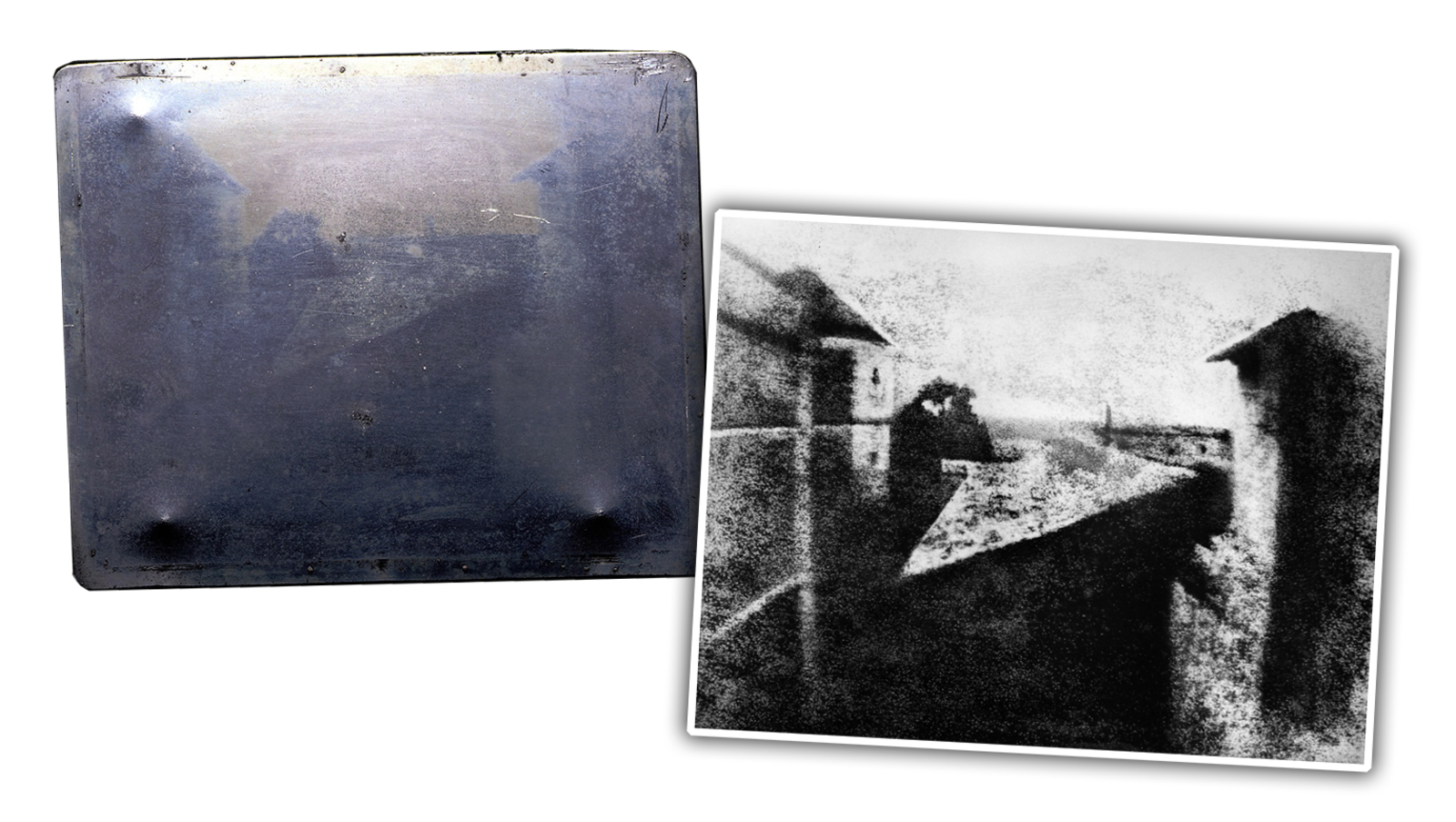
I must admit that the title is very cumbersome - I just really like how much of everything it contains, especially since it's true. The first stories combustion process, which is driven by any vehicle that has been caused by the fuel on the basis of moss ( approx. Per. More precisely lycopodium ). The engine in question was installed in a boat operating on the principle of a jet ski. And yes, the inventor of this engine was a man who later took the first ever photograph. Our world can be incredibly amazing.
The first internal combustion engine was invented in 1806 by the Niepse brothers: Nicephorus (it was he who later became the inventor of photography) and Claude. They named their invention pyreolophore (pyreolophore, from Latin pyr - fire, eolo - wind, phore - transportation or production).
As fuel for the engine, a mixture of lycopodium powder (spores of the ploon, exploding when dispersed), coal dust and tar was used.
In their 1807 patent, the brothers described their invention as "a new machine, the principle of which is to expand air under the action of fire."
The expansion of this air drove the piston, although the overall layout is completely different from that of a modern four-stroke engine. The principle of engine operation was described in 1824 by Sadi Carnot, the author of the second law of thermodynamics, which demonstrated the upper limit of the efficiency of using thermal energy to operate in engines.

Carnot described the engine in his book, Reflections on the Motive Force of Fire and the Machines That Can Develop this Power. From passages like the one below, the book is very entertaining:
, ; . , , : . , ; , . , , , ; , ; , . , . , .
In practice, the pyreolophore was not connected to the propeller drive crankshaft of the boat on which it was used in 1807. The engine worked more on the principle of a jet ski - the forces of suction and pushing of water from the piston were used to draw water in the front of the boat and push it out of the rear.

It looks like this boat was the first vehicle to be powered by an internal combustion engine. However, the De Rivaz car with a hydrogen engine appeared in the next year, 1808 (although some sources point to 1807 - I adhere to the same position).
Surprisingly enough, the Niepce brothers also seem to have invented the fuel injection concept, stepping through the carburetor era - they were looking for fuel that would work more efficiently and cost less than the costly but highly flammable moss spores.
Having first proposed this idea in June 1816, Nicephorus wrote to his brother about the use of kerosene as fuel, and in July of the following year, after lengthy tests conducted by Claude, the idea of fuel injection was proposed:
"Indeed, if it is possible to inject a white petroleum oil with enough energy to achieve flash evaporation, I am confident, my dear friend, that you should get the most satisfying result."
This "satisfying result" is used in engines to this day. Some of their tests were surprisingly simple - they passed fuel through pipes using tongues as valves:
"The part through which he was supposed to blow was about 66 cm long, and the part through which the oil flowed was about 33 cm." ... The exhaust was beveled as in the previous experiment.
The experiment was extremely successful: “The flame, compared to the small amount of oil used, was huge, intense, instantaneous, and the detonation was like an explosion of lycopodium,” Nicephorus said, adding, “The results I just got revived my spirit and completely satisfied me "
The Niepses' invention was far from the Otto cycle engines that took over the world later, but the starting position was still behind them.
Nicephorus and Claude spent the next two decades improving and promoting their engine, but by 1813 Nicephorus had become interested in lithography, thanks to which he invented photography in 1826.
For his experiments, Nicephorus used a simple lucida chamber (in fact, it is just a box with a small hole - a pinhole chamber) and a tin plate coated with a bitumen-based solution - he exposed it to sunlight for about eight hours.
Then he washed the plate with a solution of lavender oil and kerosene (white oil), developing a permanent image on it.

As you can see, the image quality is not very high, but it worked - Nicephorus Niepce proved that light can be captured as an image, and these experiments paved the way for photography.
All this is really incredible - one person happened to be at the origins of such huge and dissimilar achievements of mankind. And it's especially cool that this story contains jet skis and moss.
- Russia's first serial control system for a dual-fuel engine with functional separation of controllers
- In a modern car, there are more lines of code than ...
- Free Online Courses in Automotive, Aerospace, Robotics and Engineering (50+)
- McKinsey: rethinking electronics software and architecture in automotive

Vacancies
, , , - .
, , , .
, , . , , , , , .
, , .
, , , .
, , . , , , , , .
, , .
- -
- -
About ITELMA
- automotive . 2500 , 650 .
, , . ( 30, ), -, -, - (DSP-) .
, . , , , . , automotive. , , .
, , . ( 30, ), -, -, - (DSP-) .
, . , , , . , automotive. , , .
List of useful publications on Habré
- - Automotive, Aerospace, (50+)
- [] (, , )
- DEF CON 2018-2019
- [] Motornet —
- 16 , 8
- open source
- McKinsey: automotive
- …